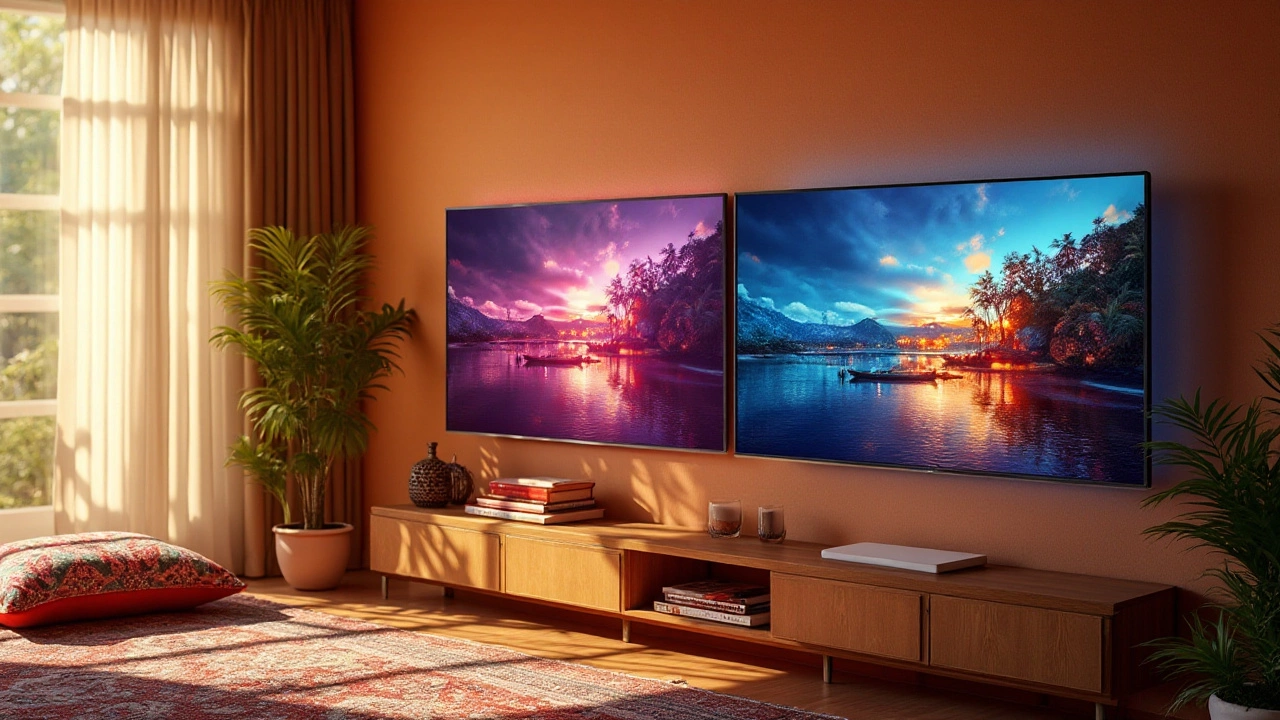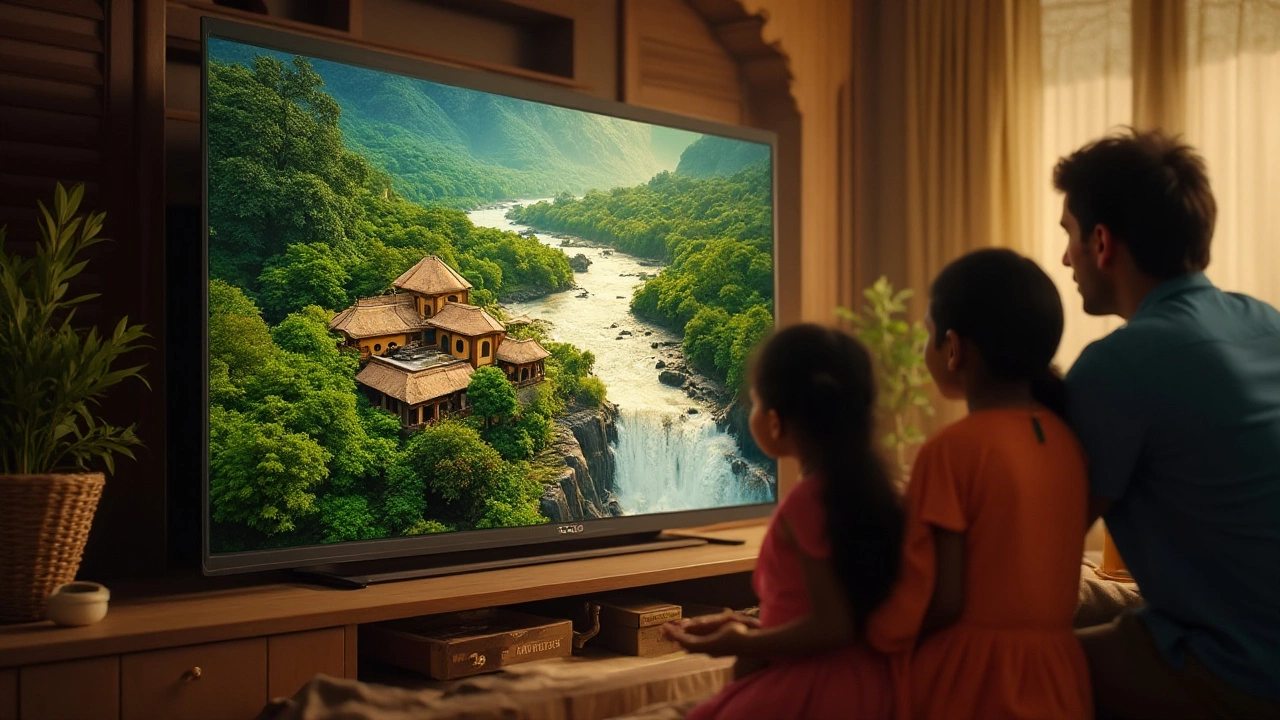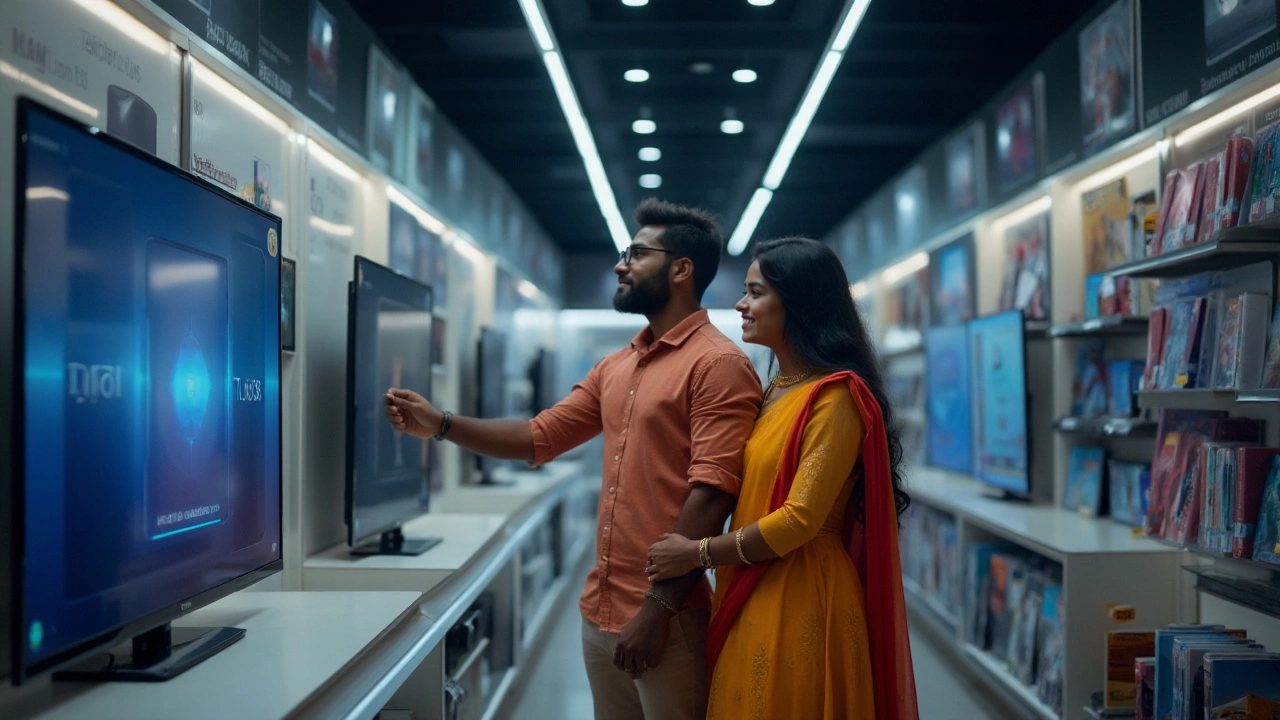
As the world of smart TVs continues to evolve, two brands consistently rise to the top of the list—Vizio and Samsung. Today, consumers face an overwhelming array of choices and features, each vying for attention with promises of better picture quality, smarter technology, and sleeker designs.
Choosing the right TV can be akin to picking out the perfect car; it's not just about looks or the latest features but what truly fits your lifestyle. Vizio and Samsung have been in this race for years, each bringing something unique to the table. Whether you're a movie buff, a gamer, or someone who wants a simple and intuitive user experience, let's delve into what these two brands offer to determine which might be the perfect match for your home in 2025.
- Picture Quality and Display Technology
- Smart Features and Connectivity
- Design and Build Quality
- Price and Value for Money
Picture Quality and Display Technology
When it comes to choosing a smart TV, the picture quality is often one of the most crucial factors. This is where the rivalry between Vizio and Samsung truly shines. Both brands utilize cutting-edge technology to enhance picture quality, but each has its unique approach. Samsung, known for its innovation, leverages QLED technology, which uses quantum dots to produce vibrant colors and deep contrasts. This results in stunningly bright and life-like images, even in well-lit rooms. On the other hand, Vizio employs Quantum Color technology that competes closely, offering rich hues and impressive clarity at competitive prices. While both technologies aim to provide superior visuals, consumer preferences often sway to one side based on specific viewing needs.
Recently, Vizio introduced its OLED range, a significant turn for the brand, known for offering stunning blacks and brilliant contrast levels. OLED pixels are self-illuminating, allowing for perfect black levels and a wider viewing angle compared to other technologies. Samsung, however, has stuck with its QLED, enhanced with new Mini LED technology adding to their already competitive lineup. Their Neo QLED series focuses on precision backlighting with many dimming zones, delivering exceptional picture depth and detail. Whether you prefer the intense brightness and exciting colors of Samsung's QLED or the inky blacks and flexible viewing angles of Vizio's OLED, both options provide stellar performance.
Vizio also maintains an edge concerning support for advanced video formats. Dolby Vision is a highlight of many Vizio models, promising a cinema-like experience at home with impeccable contrast and color details. Samsung, alternatively, offers HDR10+ support, an open standard designed to perfect the HDR experience. While Dolby Vision and HDR10+ are rivals in the tech space, the choice between them can influence your purchase decision. However, enthusiasts often argue that Dolby Vision provides an edge due to its dynamic metadata ensuring peak modifications match frame by frame. Nonetheless, HDR10+ isn't far behind, offering a scene-by-scene approach to enhancing video content.
Both brands also strive to provide more accessible gaming options, and 2025 sees continued progress in this area. With 120Hz panels and variable refresh rate (VRR) support, both Vizio and Samsung cater well to gamers seeking smooth and responsive gameplay. HDMI 2.1 ports are increasingly integrated, ensuring low latency and high-quality transmission for consoles like the PS5 and Xbox Series X. Whether you're a hardcore gamer desiring the upper hand in competitive play or enjoying a casual match, these smart TVs cater to interactive pleasures.
According to Forbes, "Samsung's QLED panels deliver outstanding brightness and color, while Vizio's OLED options remain appealing for those who favor deeper blacks and energy efficiency."

Smart Features and Connectivity
In today’s digital age, the rise of smart TVs has changed the way we interact with our screens. Vizio and Samsung are both at the forefront of this technology, offering an extensive suite of smart features that cater to a wide range of consumers. When discussing smart capabilities, it's hard not to mention the different operating systems these brands employ. Samsung's Tizen OS stands out due to its sleek interface and user-friendly design, allowing seamless access to a plethora of apps, from popular streaming services to the latest social media platforms. The quick responsiveness and smooth navigation, complemented by voice control using Bixby, make it an attractive choice.
On the other hand, Vizio uses its own SmartCast system, which has gained traction thanks to its built-in Chromecast functionality. This allows easy casting of content from mobile devices and an integration that fluently works with Google Assistant and Amazon Alexa, providing users with hands-free control and enhanced interconnectivity. Both brands support all the must-have streaming apps, with the additional benefit of offering free content through services like Samsung TV Plus and Vizio’s WatchFree+. Entertainment is no longer constrained by the availability of content but by preference, with several channels and programs ready at a click or voice command.
Fast and reliable connectivity is crucial for a smart TV's performance. Hence, both brands have continually improved their network capabilities. Samsung equips its lineup with Wi-Fi 6, which offers faster speeds and better stability, future-proofing devices for growing demands. Vizio doesn’t lag too far behind, providing swift internet connectivity to ensure crisp, uninterrupted streaming experiences. Both TVs seamlessly connect with smart home networks, allowing users to control their TVs via smart home systems.
According to a recent industry analysis, "Samsung and Vizio have demonstrated an acute understanding of consumer demands for more integrated and versatile smart features that blend with everyday tech environments."
Additionally, gamers will appreciate the low latency modes and support for GameStream, Dual View, and advanced dynamic resolution based on input, whether HDMI 2.1 or legacy systems. These features ensure optimal gaming performance, enabling immersive engagement with gaming consoles without the hassle of configuration. Whether for streaming, gaming, or daily conveniences, the robust smart features and connectivity of both brands ensure they remain central to home entertainment systems in 2025.

Design and Build Quality
Design and build quality are crucial aspects when considering a new smart TV, especially when you're choosing between a Vizio and a Samsung. Both brands have carved a niche in the industry, not only due to their technological prowess but also because of their ability to craft visually stunning pieces of technology. A TV is no longer just a screen; it has become an integral part of home decor, and for many users, its design is as important as its performance. Vizio, known for its minimalistic approach, usually incorporates a sleek and modern design language, often resulting in a product that feels both sturdy and aesthetically appealing. Their focus has often been on providing an immersive viewing experience, with slim bezels and a focus on screen size that allows viewers to become deeply engrossed in whatever they are watching. On the other hand, Samsung takes it a step further, often deploying cutting-edge design innovations. Samsung's focus on ultra-slim profiles and architectural aesthetics allows their TVs to blend seamlessly into any contemporary setting.
This aesthetic competition has driven Samsung to introduce innovative features like the Ambient Mode, which cleverly transforms the TV into a work of art when it's not in use. Such features underscore Samsung's commitment to not just television, but to design that enhances living spaces. One of the shining examples is the Samsung Frame TV, which not only acts as a high-performing television but also serves as an art display when not in active use. According to a verdict by TechRadar, "The Samsung Frame TV's prowess lies in its ability to transform a standard living space into a dynamic gallery." On the Vizio front, the approach has been more about subtlety. With an emphasis on strong build materials synonymous with enduring quality, Vizio manages to deliver solid and reliable products that merge functional design with high performance.
When examining the materials and construction quality, both Vizio and Samsung invest in robust, durable materials. Samsung's higher-end models often include touches of metal and premium materials that not only signify durability but also enhance the television's aesthetic appeal. In contrast, Vizio tends to focus on delivering value, ensuring that even affordable models reflect a build quality that punches above their weight. One cannot overlook the meticulous detail in things like remote controls, where both brands have moved towards ergonomically friendly designs. Samsung typically opts for sleek, metal-focused remotes with a minimalist array, while Vizio includes feature-rich remotes with intuitive button layouts, often highlighted with smart features that connect across their ecosystem. A user's first glance at their living room often sets the tone for the rest of their experience; thus, both brands have understood design as a critical arena for outshining the competition.

Price and Value for Money
When it comes to purchasing a new smart TV, the price and what you get out of it play a crucial role. Two brands come to mind, Vizio and Samsung, both offering a range of televisions to fit different budgets. Vizio, often seen as the more budget-friendly alternative, has carved out a niche by delivering high-quality products without breaking the bank. Their TVs are widely known for offering robust features at competitive prices, making them an attractive option for those seeking affordability without sacrificing much on performance.
Samsung, on the other hand, is often associated with premium pricing, but for a good reason. Their smart TVs come loaded with features such as QLED displays, bringing vibrant colors and enhanced brightness levels. While the initial cost might be higher, Samsung argues that the long-term benefits and durability justify the investment. According to a study by Consumer Reports in 2023, Samsung TVs had a 10% lower failure rate compared to other brands, suggesting longer lifespan and reliability.
Let's break it down even further. Vizio offers models like the V-Series, which typically starts under $500, a sweet spot for budget-conscious buyers. These models pack in features such as 4K resolution, Dolby Vision, and streaming apps, providing impressive returns on investment. Samsung, with their entry-level Crystal UHD series, might start at a slightly higher price point, but with that, you get a piece of their robust Ecosystem, including SmartThings integration and regular software updates.
Both brands also cater to those looking for the best in entertainment. Vizio's P-Series Quantum takes on Samsung's QLED technology, delivering an exceptional viewing experience and yet remains competitively priced. Notably, Vizio holds the edge in gamer's circles for its support in variable refresh rates, crucial for a seamless gaming experience. Samsung excels with advanced technologies and offers consumers peace of mind knowing that even standard models retain crisp image quality and intuitive user interfaces.
To summarize the key takeaways in terms of price and value: Vizio tends to offer excellent value for money, particularly in the mid-range segment with competitive pricing for the features offered. Meanwhile, Samsung presents itself as a pioneer in television innovation, promising lasting quality and cutting-edge technology that's worth the investment. With either choice, consumers are bound to have a satisfying experience, as both companies have adapted well to the ever-evolving expectations of the modern smart TV buyer.